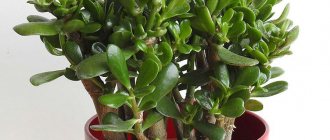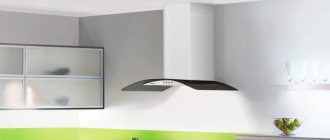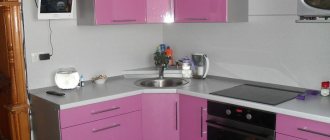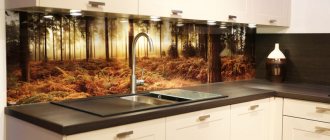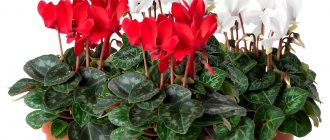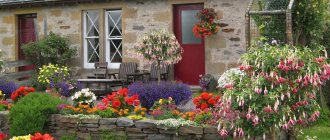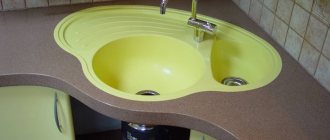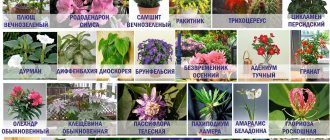Types of indoor plants for the kitchen
Here we mean species, not individual flowers.
All of them can be divided into 3 categories. 1. Sun-loving, and therefore most suitable for the kitchen, although not everything is so simple with them. Considering the usual layout, with an abundance of light, and the fact that there is practically nowhere to place flower pots except the window sill.
It is better to choose light-loving plants for a kitchen with large windows.
2. Preferring shaded places, these are indoor plants suitable for the kitchen, the windows of which face north or west. Otherwise, you will need to look for a solution, because there will be nowhere to place them in the back of the room.
Shade-loving indoor plants, suitable for kitchens with windows facing north or west.
3. Resistant to any conditions, and therefore the most unpretentious and suitable for such premises. But one peculiarity is associated with them - not a single plant of this species is particularly beautiful.
Plants that do not require special care are usually not beautiful
All these species differ not only in their whimsical appearance, but also in their conditions of detention. Some are picky and require constant attention and care, others not so much, but special conditions are equally important to all of them.
Methodological development of a lesson on the surrounding world in 2nd grade “Plant nutrition”
Form of lesson organization:
- type of lesson: lesson in the formation of initial subject skills, mastering new knowledge;
- intended purpose: primary acquisition of new subject knowledge;
- assessment of learning effectiveness: correct reproduction of natural history processes.
Lesson objectives:
1. Achieving subject results:
- know and correctly use the terms and concepts of the topic;
- learn to explain the process of plant nutrition; (Plant nutrition is a single process in which the main nutrition of green plants is formed from water and carbon dioxide in the light in the leaves.)
- understand the importance of light, heat, water and air for plant life;
- carry out experiments to study the process of plant nutrition
2. Formation of UUD:
- determine the nature of the relationship between man and nature,
- find examples of the influence of these relationships on natural objects, on human health and safety (observe the rules of environmental behavior in nature):
- set a learning task and follow it in collective independent activities;
- take into account jointly identified action guidelines in the new educational material;
- take into account the established rules in the process of activity.
- collective independent search and extraction of information from the reader;
- establish, based on analysis, logical connections between blocks of extracted information, draw generalizations and conclusions.
- ability to negotiate;
- recognition of the role of the leader and the importance of the role of each team member;
- the ability to accept and take into account a different point of view and method of action proposed by others;
- ability to build relationships in a team.
- Goal setting is the ability to accept an educational (practical) task based on what is already known and learned, and what is unknown .
- Planning as the ability to independently determine the sequence of actions when solving educational problems.
- Control as the ability to compare a method of action and its result with given standards;
- Self-regulation as the ability to start and finish educational actions at the right moment, inhibit unnecessary reactions, remember and retain rules and instructions over time;
- Correction as the ability to correct intermediate and final results of one’s actions, as well as possible errors;
- Self-esteem as the ability to realize what has already been learned and what still needs to be learned, the ability to realize the level of assimilation.
Equipment:
- Churakova R.G. Technology and aspect analysis of a modern lesson in primary school - M.: Akademkniga/Textbook, 2009
- HE. Fedotova, G.V. Trafimova, S.A. Trafimov. The world around us: 2nd grade: textbook in 2 hours, part 1; – M.: Akademkniga/Textbook, 2010.
- HE. Fedotova, G.V. Trafimova, S.A. Trafimov. The world around us: 2nd grade: a reader - M.: Akademkniga/Textbook, 2011.
- HE. Fedotova, G.V. Trafimova, S.A. Trafimov. The world around us: 2nd grade: notebook for independent work in 2 hours, part 1 - M.: Akademkniga/Textbook, 2011.
- HE. Fedotova, G.V. Trafimova, S.A. Trafimov. The world around us: 2nd grade: methodological manual - M.: Akademkniga/Textbook, 2009.
- school-collection.edu.ru. Application .
- Magnifying glasses, plates, napkins
- Balsam and prototypes.
How to choose flowers for the kitchen
So what kind of indoor flowers are appropriate and useful in the kitchen, and can also withstand a rather unfriendly environment? When choosing the most optimal option, you should take into account the following factors:
- Light level. One of the most important conditions on which the full and comfortable development of plants depends. Some crops love bright sun rays, others prefer openwork partial shade. Well, still others feel better in the shade, away from the sun.
- Room air temperature. Most of the houseplants grown are descendants of people from warm tropical countries, where the climate is almost the same throughout the season. If it’s much colder in the kitchen in winter, you shouldn’t forget about it.
- Life cycle nuances. There are quite a few indoor flowers that need a period of rest (most often in winter). At this time, the plants do not look very presentable, sometimes they even lose their leaves completely.
- Kitchen size. Large indoor tub crops with spreading leaves are absolutely not suitable for small spaces. Plants will get in the way and be constantly injured. And, conversely, miniature flowers will simply get lost in a huge empty space.
- Difficulty of care. It is better to opt for unpretentious and undemanding indoor plants that do not require special and painstaking care (frequent spraying, specific fertilizing, planting, etc.). It’s good if the leaves are easy to wash, as they quickly become dirty from fat, dust, flour, etc. settling on them.
- Presence of small children and pets in the kitchen. Some crops are poisonous, this must be taken into account.
- Tendency to allergies. If there is an allergy sufferer in the house, then it is better to exclude profusely flowering ornamental indoor plants, as well as those with a strong odor, both in the kitchen and in other rooms.
According to the fashionable Chinese teaching of Feng Shui, only plants with strong feminine energy are suitable for the kitchen. Their distinctive feature is rounded leaves (cyclamen, violet, crassula, etc.).
Plant problems in the kitchen
It is better to choose flower pots that are the same and match the design of the kitchen.
Flowers in the kitchen interior are part of its design and form the human environment.
However, we should not forget that they are alive and to perform their functions they need:
- Lighting. In dim light, photosynthetic plants do not live long. Only parasitic plants live in darkness and twilight, but they are usually not bred in apartments.
Even the most shade-tolerant plant needs the minimum necessary lighting, lasting at least 8-10 hours.
If the plant is placed under only an artificial light source, it should receive this light for as long as it would under natural light. If the plant does not receive light for two to three days, it dies, even if it is then moved to a well-lit place.
A compromise option is mixed placement, when the plant is illuminated from both natural and artificial light, which helps to avoid many flower diseases and leaf loss.
The cactus can be safely placed near a microwave oven; it is not afraid of radiation.
- Temperature changes. The modern kitchen is full of sources of increased temperature. This is a gas stove, central heating radiators, hot water taps, a kettle, etc. But most of them do not work constantly, creating large temperature contrasts. For a person, this may not be significant, but for a stationary plant, the entire system of hot air sources that switches on and off is a great and constant stress.
- Sources of microwave radiation. In moderate quantities, such radiation can even be beneficial for some plants. However, in the kitchen, moderation is not always observed and the flower, which is the pride of the housewife, suddenly stops blooming, turns yellow, sheds its leaves and otherwise expresses its displeasure about the electromagnetic extreme.
- Emotional environment. The kitchen is a place of frequent or periodic concentration of people with different emotional moods. Everyone likes to be loved, including plants as living organisms. A plant that is the center of attention may bloom with joy or wither with sadness.
A flower for the kitchen cannot be placed near a source of cold or hot air and forgotten about it. He will only please a person when a person pleases him. If it is not possible to properly place the plant, you need to consider a system for isolating it from adverse effects. To do this, you can use insulating materials such as foam or plastic.
Indoor plants in the kitchen interior often suffer from dry air and therefore need frequent spraying. You can, of course, use an air humidifier if people like it and it doesn’t interfere with the processes of making oud in the kitchen.
Where not to put flowers
Of course, the window sill is not the only place within the kitchen where flower pots are placed. For example, they are often hung from the ceiling if they are climbing plants, placed on wall shelves, refrigerators, or even placed on the floor. But there are places where flowers should not be, and the point is not that it spoils the design:
Hanging flowers fit very harmoniously into the kitchen interior and take up minimal space
- there is no place for them near the sink, for practical reasons - household chemicals used when washing dishes kill unprotected living organisms;
You should not place flowers near the sink. Household chemicals negatively affect plants
- due to the high temperature, you should not place flower pots next to the radiator, it dries out the air so much that even constant watering does not help;
You should not place flower pots next to the radiator; it dries out the air so much that even constant watering does not help.
- flowers should not be placed next to or near the kitchen stove; here they lose the ability to breathe from the greasy coating that accumulates on the stems and leaves.
Do not place plants near the stove. Due to fat and burning, plants lose their ability to breathe
It is important to know! Indoor plants on the walls or under the ceiling require much more moisture, fresh air and care in general, due to the rising heat creating uncomfortable conditions for them.
For a sunny kitchen
Now let’s talk about what flowers you can keep in your kitchen if there is an excess of sunlight in it. A good solution for such premises are those plants that are not new to such conditions. That is, if their natural habitat is in the desert or steppe regions of the planet.
Flowers in a sunny kitchen always look fresh and bright
Succulents
These plants have completely different origins, but they are all equally resistant to drought. They will tell you about overwatering - their fleshy leaves will begin to thin or wrinkle.
Soil: for succulents and cacti. Watering: in summer, succulents are watered no more than once every 1-2 weeks (or even less often), and in winter - even less often. Temperature: 7-35 degrees.
They are not afraid of drafts, they are hypoallergenic, mostly non-toxic and are unlikely to be of interest to pets - although anything can happen. There is no need to spray succulents, but you can periodically wash them from the shower with non-hot water, while avoiding waterlogging of the soil.
We will give just a couple of examples, but these characteristics apply to other succulents as well. And, believe me, there are a lot of them.
Geranium
The beloved Geranium (Geranium), or cranebird, is a member of the Geranium family, but the plant that we used to call geranium actually belongs to another genus of the same family - Pelargonium.
Pelargonium is useful because its leaves contain a large amount of essential oils, which kill pathogens and have a beneficial effect on human health, having a calming effect. Geranium essential oil is widely used in perfumery and aromatherapy.
Crassula
Most often, Crassula ovata (Crassula ovata) is grown as a houseplant. This flower is known to many by other names: money tree, tree of luck, jade (jadeite) plant. Crassula received these names because of the external resemblance of the leaves to jade and jadeite - stones that have been considered since ancient times as talismans bringing success, happiness, family well-being and longevity.
Crassula feels good on western and south-eastern windows. It filters and humidifies the air, which is why it is often kept in the kitchen.
Epipremnum
Epipremnum was formerly known as scindaptus. Like chlorophytum, it perfectly filters the air from excess carbon dioxide, which is a by-product of the use of gas burners. Epipremnum is easily identified by the presence of fleshy leaves of rich green color located at the ends of long vines. This culture is evergreen and heat-loving. The plant is not able to develop if there is a lack of sunlight or in cold and dry conditions, so the kitchen becomes the optimal place of residence for it. It is important to mention that it will not be able to grow in gloomy northern rooms.
Since vines are actively formed during the development of the epipremnum, it is necessary to select a place for it taking into account this feature. Ideally, long shoots are located along the wall or along the upper shelves. In addition to standard care, the plant requires periodic wiping of dust from the leaves and spraying them.
Phalaenopsis orchid
An epiphytic plant, considered the most unpretentious of all those cultivated indoors. Consists of 4-6 wide, thickened and shiny, leathery leaves ranging from 5-30 cm in length. Grayish-greenish thick (up to 8 mm) aerial roots and branching flower shoots emerge from the axils, reaching up to 60-70 cm in height. Large , spectacularly and variedly colored flowers are extremely reminiscent of an outlandish tropical butterfly with open wings.
A tropical culture that loves warmth feels good at stable temperatures in the kitchen around +22...+25 °C (with a difference between day and night of about 5 °C). Water the indoor flower moderately using the immersion method. Spray regularly (water should not get into the sinuses), maintaining humidity. The length of daylight hours is recommended to be at least 14-15 hours.
Ivy
An evergreen, climbing or creeping, liana-like, shrubby plant, scientifically called hedera. Long petioled leaves, usually having 3 or 5 wide lobes, sit alternately (in a checkerboard pattern) and tightly on the long lashes. The leaf blades are dense, leathery, plain or variegated (striped, spotted, etc.) with pronounced veins. Small greenish-yellowish flowers are not particularly beautiful.
Indoor ivy most prefers moderate and slightly diffused natural light in the kitchen, but can grow well under artificial lighting. The flower tolerates short-term cold snaps down to +5 °C; in winter it likes cool weather (+10…+15 °C). Watering is regular and plentiful; the earth clod should not be allowed to dry out. All parts of the plant, especially the fruits, are considered poisonous.
cacti
Plants with thickened stems of various shapes and sizes (ribbed, papillary, flat, etc.), covered with needles, hairs or bristles - modified leaves of various colors and lengths. The flowers are tubular, funnel-shaped, sometimes very fragrant.
Succulents that do not need frequent watering, but require maximum brightness in the kitchen. In winter, indoor cacti must be kept cool, otherwise flower buds will not form at all.
Begonia
When choosing begonia to decorate your kitchen, you should give preference to special indoor varieties that bloom both in summer and winter. The plant does not like shade, so it should only be planted in kitchens facing west, south or east. The optimal light for begonia is bright and diffused. Despite the fact that the plant feels good in high humidity, it is not worth spraying it additionally, as this threatens the appearance of dark, unsightly spots.
Begonia, like the other plants mentioned above, participates in air filtration due to the release of phytoncides.
Pilea Cadieux
A member of the nettle family (Urticaceae), Pilea (Pilea) is quite popular in indoor floriculture. Plants of this genus amaze with their variety of shapes and colors. One of the most interesting species is Pilea cadierei.
Thanks to its exquisite shape, the Pilea will perfectly decorate any interior. Its beneficial effect on the composition of the air in the house is also known. To prevent the silver pattern on the leaves of this plant from fading, place the pot on a north or east window: this way the pilea will avoid being burned by direct sunlight, while still receiving enough light.
Aloe
There are more than 30 types of agave, differing in shape and color - for example, as in the photo. The older the aloe, the less often it needs to be watered.
It is very easy to care for: plant it in special soil for succulents and cacti, but it will just as well grow in soil dug up in the yard or park.
Aloe rarely blooms. Therefore, you can choose something different for the kitchen.
Kolanchoe
Flowering species - Kolanchoe Blossfeld, Mangus and Kalandiva need to be removed or covered from the sun after 3 o'clock in the afternoon. Less demanding in this case are the viviparous Kolanchoe - tubular-flowered, pinnate or Degremona.
The dissected-leaved kolanchoe or “deer antlers” also has an unusual appearance. Even on dimly lit windows it will delight you with bright yellow flowers.
Penumbra and shade
Kitchen flowers that prefer shaded areas are a completely different type of plant. They are susceptible to bright sunlight, they need more coolness than warmth, and a lot of moisture. Such plants are relevant for kitchens whose windows face north and the sun's rays rarely penetrate into them.
If there is not enough light in the kitchen, you can always use additional lighting sources
Zygocactus
This is one of the many names for one plant that is incredibly beautiful and fits well into the interior of any shaded room, not just the kitchen. This is one of the varieties of epiphytic cactus, well known and widespread as a houseplant, despite the fact that it grows wild in only one place on the planet. The homeland of zygocactus, also called Schlumberger, Decembrist, Christmas cactus, is the tropical forests of Brazil.
An incredibly beautiful flower from the cactus family. During the flowering period it is impossible to take your eyes off it
Sansevieria
Mother-in-law's tongue or pike tail, as Sansevieria is very originally called in everyday life, is a perennial stemless plant with tall (up to 1.2 m), dense, leathery, decorative, pointed leaves. The leaf blades are usually variegated with various stripes, stains, spots, etc. The peduncle that appears in the spring with small creamy-whitish buds has a rather pleasant clove-vanilla aroma.
The plant is undemanding to the level of lighting in the kitchen; it develops equally well in a shaded place and in the light. Tolerates dry room air and does not require frequent humidification. This flower absorbs harmful air impurities that accumulate in the kitchen, as well as negative negative energy.
Cisus
Cissus is known to most gardeners as an indoor grape. It gained its popularity due to its undemanding nature in placement and care, as well as the appearance of beautiful weaves during development. Once you have planted cissus in the kitchen, it is better to tie the vines to special supports so that they get used to keeping their shape. After some time, the need for them will completely disappear. The plant feels best at temperatures from 10 to 18 degrees Celsius, depending on the season. It is important to ventilate the room in which it grows, but avoid drafts or exposure to direct sunlight. Ideally, the place should be either shady or with diffused light.
Cisus should not be placed near batteries - dry air will harm it.
Fresh flowers in the kitchen interior
Of course, a feeling of eternal celebration and real freshness will be brought with you by fresh flowers placed in a vase. Unfortunately, they are not durable, so they can please the eye only for a limited time. Kitchens that are decorated using a single color scheme look very beautiful: the flowers on the wallpaper match those placed in the vase, creating a feeling of completeness and harmony in the composition.
Plants in pots will delight the eye for a long time; they can be placed in the brightest places, for example, on a windowsill. Such flowers will add coziness to the room. Heat-loving plants are best suited for the kitchen: ferns, chlorophytum, dieffenbachia. Violets of different varieties look beautiful, especially during the flowering period. Thick vines climbing along the walls will also become an original decoration of the kitchen.
When choosing flowers to decorate your kitchen, you should take into account its size: a heavy palm tree in a pot in a small room will look out of place. You should also take into account not only your own taste, but also the preferences of plants: if the window sill is small, then it is best to place flowers in hanging pots along the lightest wall of the kitchen.
Which herbs to choose for the kitchen?
When choosing plants for your corner of the garden, be guided by your preferences. What spices do you use most often? What dishes dominate your menu? Remember that herbs in cooking do not require special care - in most cases, it is enough that you take care of watering them regularly. Choose those plants whose taste and aroma are most pleasant to you.
Basil
This is one of the most popular plants in the kitchen herbarium. I'm sure you'll find it on your spice rack - its aniseed flavor and intense clove aroma enrich the seasoning in a unique way. Basil is known for its antioxidant properties and also contains many vitamins (A, K and C, as well as magnesium, iron, potassium and calcium).
Pots of basil will decorate your kitchen, but it is better to sow it in early spring.
Basil is one of the most popular herbs in the kitchen.
Green onions
A popular breakfast companion and a useful companion in the fight against small troubles, green onions stimulate the appetite and are great in soups. Contains easily digestible vitamins C, A, K, B2 and E, as well as iron compounds, calcium, potassium and folic acid.
You can grow any onion (though they will always taste a little different) - regular, white or red - but small onions work best.
A popular companion and useful companion, green onions.
Coriander
The pronounced taste and aroma of coriander is ideal in combination with fish, soup and Indian dishes. It is worth enriching the herbarium in the kitchen with a pot of coriander because it helps maintain normal blood sugar levels, has a positive effect on the liver and improves digestion.
Coriander is best sown in summer. It grows quite quickly, but requires plenty of sun and water.
Coriander is best sown in summer, but it requires plenty of sun and water.
Mint
It is one of the most commonly grown herbs in the kitchen. Who among us has not drunk fresh mint tea? Its refreshing aroma is ideal for drinks and juices, and its healing properties will help with heartburn, flatulence or nausea.
Mint should be placed in partial shade - too much sun can burn the leaves. She also loves a lot of water, so remember to water her regularly.
Mint is one of the most commonly grown herbs in the kitchen.
Rosemary
Rosemary is good to have on hand if you like Spanish or Mexican cuisine and will certainly come in handy when cooking meat. It's also the perfect seasoning for baked potatoes. In addition to its taste properties, rosemary will certainly enrich your kitchen herbarium with decorative qualities.
Rosemary feels good in both well-lit and shaded areas. However, it should be watered sparingly.
Rosemary will enrich your kitchen with decorative qualities.
Parsley
Probably each of us knows this taste. Fresh parsley is an element that every herb-scented kitchen must have. Parsley is useful all year round, as a dish for soups, meats, sauces, salads. Contains large amounts of vitamins A and C, as well as mineral salts and iron.
Parsley loves a lot of light and water, but you have to keep an eye on it in the summer - it's better to find a slightly cooler place for it. If you are growing it in a pot, you can harvest the leaves several times throughout the year.
Parsley is useful all year round.
Lavender
A plant that can decorate not only the herbarium in the kitchen, but the whole house - especially when we think about the interior in the Provence style. Lavender is as much about smell and appearance as it is about taste - its aroma can be used to enhance a roast or added to a jar to create a sweet, sugary mixture perfect for tea, for example. It is also an effective weapon in the fight against moths.
Lavender will need a large pot. As befits its Mediterranean ancestry, it loves warmth and moisture, so it is easiest to grow in the summer.
A plant that can decorate not only the herbarium in the kitchen, but the whole house.
Important little things
You can also decorate the curtains in the kitchen with decorative flowers, for example, by linking them with a large flower. The curtains themselves can be made of floral fabric: they look very cute and improve your mood. For a modern kitchen, light curtains in light colors, complemented by floral edging, are perfect. This option will also help to add harmony to the room: white tulle and a lambrequin with large bright flowers. Bright floral elements will help you set accents: potholders, napkins, tablecloth, wall panel.
There is a wide variety of colors used in kitchen decoration, so each housewife can choose the element that best suits her taste. Flowers will not only add freshness to any interior, but also improve the mood and emphasize the individuality of the owner.
"Female" and "male" plants
If you study the science of Feng Shui deeply enough, you probably know that all objects can be divided into “male” and “female” according to the type of their energy. The same principle applies to indoor plants and flowers. So, for example, lemon, dracaena, asparagus and other plants have Yang energy, and Yin energy is inherent in begonia, cyclamen, violet and others (you can find out more in books and tables on the Internet).
Plants for indoors should be selected so that some of them belong to one type, and some to another. Then harmonious energy will reign in the house. When it comes to Feng Shui plants for the kitchen, the rules change a little: in the place where we eat, there should only be “female” plants.
Perhaps this is due to the fact that the kitchen is traditionally considered a “female” room. Although there are exceptions: if your kitchen windows face south, southeast or southwest, then you can “plant” “male” plants in it. The main thing is not to overdo it with their quantity and dilute them with “female” types.
When it comes to indoor flowers, Feng Shui experts agree that they should be in the kitchen, and in large quantities, if, of course, the size of the space allows. Here you can ignore their division into Yin and Yang.
Kitchen and plants - compatibility problems
Living plants for the kitchen are a separate problem, not because a special design approach is needed here, but because the kitchen is a space where they prepare food, spend family holidays, and do household chores.
Using aqua soil instead of soil will help maintain sanitary standards.
A vigorous process of life activity takes place in the kitchen, and this leaves its mark on those living and green plants that are in the limited space of the pot and serve as decoration.
The main principle of compatibility between plants and cuisine is that they do not interfere with each other.
An important condition for the presence of flowers in the kitchen is the need to comply with sanitary standards. Soil in pots is always a potential source of entry into human food by parasites.
Many of them acquire in the soil the very invasive stage of development at which human infection is possible.
All these considerations do not exclude the possibility of flowers in the kitchen, but dictate the need to take precautions when maintaining living plants and a special approach to their placement.
All about do-it-yourself roofing - kryshikrovli.ru.
A little feng shui
Many of us prefer to arrange furniture, flowers, and indeed half of our lives according to the ancient philosophy of Feng Shui. And if you are one of them, then the following information is for you.
North side
If the kitchen is located on the north side, then we select plants with orange or red flowering. Bright flowers, for example, rhododendron , will “dilute” the northern cold of life. To protect the house from the “cold” we also place pointed flowers like dracaena .
East side
If the kitchen is located on the east side, then you cannot place holly flowers on it. To increase well-being in the house, let’s put a money tree , this is the place for it. The round, strong leaves of this plant are easy to clean, and the flower itself is hardy enough for the kitchen.
Indoor flowers ennoble even the most trivial interior. A green corner in the kitchen will not only make it more comfortable and lively, but will add oxygen and health to you. Some types of houseplants, such as geraniums, even kill a range of bacteria. Be sure to get flowers for your forge and don’t let the heat, fumes and steam bother you, choose the right plants, take care of them on time and then they will delight your eyes every day.
Suitable plants for the kitchen according to Feng Shui
When choosing indoor plants for a room where the whole family gathers to eat, you can rely on your own preferences. The only thing to avoid is cacti, palm trees and other plants whose leaves are arrow-shaped. It is believed that in a space where a person spends a lot of time, these species can negatively affect his health.
You can take a Bagua grid and see which plant or flower would be more appropriate in which part of the kitchen. Thus, the northern sector is the best place for dracaena and other types of plants that have thin leaves with pointed tips, as well as flowers of bright red, pink and orange.
The eastern part of the kitchen is most suitable for vegetation with rounded and soft leaves. The ideal option would be the money tree, which is considered a very favorable symbol that brings prosperity to the house.
Also popular plants for the kitchen according to Feng Shui are geranium, bamboo, begonia and chlorophytum. Geranium relieves fatigue from a person and adds vitality to him, bamboo and chlorophytum transform bad energy into good, and begonia neutralizes harmful fumes that so often form in the kitchen.
Minimum Requirements
Despite all the simplicity and undemanding care, do not forget that living plants are grown in a home garden, which must be provided with a number of conditions to maintain life and normal development.
Light
- this is the most important factor in the successful cultivation of any plants in the home environment, therefore the window sill is considered the optimal place to place a kitchen mini-garden. An alternative solution could be tables and shelves near the window, and if you want to try your hand at vertical gardening, a wall next to the window that receives the maximum amount of daylight.
Drainage.
Plant roots need regular watering, but excess water must quickly leave the soil, otherwise air will not reach the roots, they will begin to rot and the plant will die. Therefore, all flower pots have special drainage holes in the bottom - through them, excess water is poured into a cache-pot (an external decorative pot without drainage holes) or into a tray on which the pot with the plant stands.
If you have some experience, herbs can also be grown in containers without drainage holes (in cups, glasses, saucepans, decorative containers, etc.), but in this case, a layer of small pebbles or expanded clay with a thickness of at least 2-2 3 cm so that excess water from the soil goes into it. And, of course, you need to water the plants very carefully - not too often and little by little.
Watering.
Plants need regular watering with settled water at room temperature to keep the soil in the pots constantly moist. You should not overdry the plants - this will negatively affect their development and in some cases can even lead to their death. But there is also no need to be too zealous with watering - it is just as difficult for plants to survive “in a swamp” as in a dry “desert”. Balance the volume of water for irrigation with the size of the plant and the container in which it is planted: do not try to pour a liter of water into a small 200 ml glass.
Fertilizers.
Ordinary indoor plants need regular feeding for more luxuriant growth and flowering. However, when growing edible herbs and berries, you should be very careful when using fertilizers, especially those containing large amounts of nitrogen and organic matter: in the process of life, plants transform them into nitrates that are harmful to health, making greens from a home mini-garden very dangerous or even completely unsuitable for nutrition. Therefore, annual greens and herbs need not be fed at all, and perennials and strawberries - no more than once a month with a highly diluted complex mineral fertilizer.
Photos: growingfamily.co.uk, ikea.com, woollygreen.com, budetezdorovy.ru, dzedzich.org, frining.com, miraman.ru, zelenysad.ru
Add to favorites5
- Tags
- vegetable garden in the kitchen
- greenery
- spices
- strawberries
kitchen garden, greens, herbs, strawberries
Care Tips
Every plant in the kitchen, or in any other room, requires at least minimal attention and care. Of course, each of them has their own needs, and each connoisseur has their own secrets, and as for advice, they differ little, regardless of who gives it. The most common ones are expressed as follows:
- sun-loving plants, such as aloe, do not need to be watered often, once a week is enough;
- the best “flower” in the kitchen will be fruit-bearing trees, like kumquat - they themselves are beautiful, and their fruits are very useful;
- Decorative peppers are no less popular - they are easier to plant and the effect is the same, especially in winter;
- Among herbaceous plants, special attention should be paid to spicy ones - both their appearance, their benefits, and their pleasant smell.
A few more ways to garden your kitchen
The most luxurious flowers in the kitchen interior are the beautifully blooming specimens that decorate the windowsill: begonia and saintpaulia, kalachik (geranium), primrose, azalea. Schefflera and dracaena are suitable for placement in the center of the dining group.
Coffee trees, decorative peppers, miniature pomegranates or an impressively sized lemon tree will harmoniously complement the kitchen style. Calathea, balsam or arrowroot can be placed a short distance from the sink (so that splashes of detergent do not fall on the plants).
Enough light, but don't want to water your plants often? It is worth paying attention to succulents - cacti, agaves, aloe, crassula or spathiphyllum.
If there is no hood in the room, and the problem is solved by frequent ventilation, then suitable flowers are zebrina, tradescantia, chlorophytum, scindapsus, hypoestes, and begonia. All these plants are immune to drafts.
Flowers in the kitchen interior can also be placed in the form of an impressive green oasis. If the room is spacious, then the basis of such a composition will be large plants in tubs - hibiscus, monstera, ficus, yucca, dracaena.
If the kitchen is decorated with racks and shelves, then the green decor will be ampelous plants - such as ivy, passionflower, tradescantia, scindapsus or chlorophytum. For plants in this group, you can also make special decorative stands or pendants. And don't forget that the kitchen is the place where you can grow herbs - mint and watercress, dill and parsley, thyme and basil.
Kitchen dimensions
It’s easy to overload a small room with excessive landscaping, and large quantities of flower pots won’t fit. Here it is better to use compact plants or move large hanging specimens to wall planters. In the second case, the location of the flower for the kitchen should take into account the nearby furniture - whether it will be convenient to open the cabinet doors without catching the green stems.
Ampelous plants suitable for the kitchen:
- Ivy (its branches will need additional support or fishing line).
- Chlorophytum - perfectly purifies kitchen air even from gas combustion products.
- Passionflower (demands on lighting, otherwise it simply won’t bloom).
- Tradescantia.
What should not be in a small kitchen are floor flowerpots with large flowers - they will be constantly injured and may soon die.
Only in large areas will particularly large specimens in tubs be appropriate:
- Ficus is a useful plant that destroys bacteria in the air.
- Hibiscus or Chinese rose - these bright flowers in the interior of the kitchen can be assigned the role of the main decoration.
- Yucca - calmly tolerates a lack of water, but loves the sun very much.
- Dracaena is a relatively unpretentious family in terms of care, but very sensitive to human energy.
- Monstera - does not like direct sunlight, but will always warn about the approach of rain by starting to “cry”.
